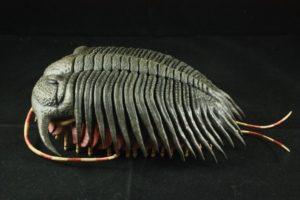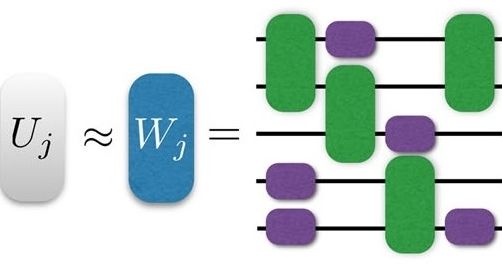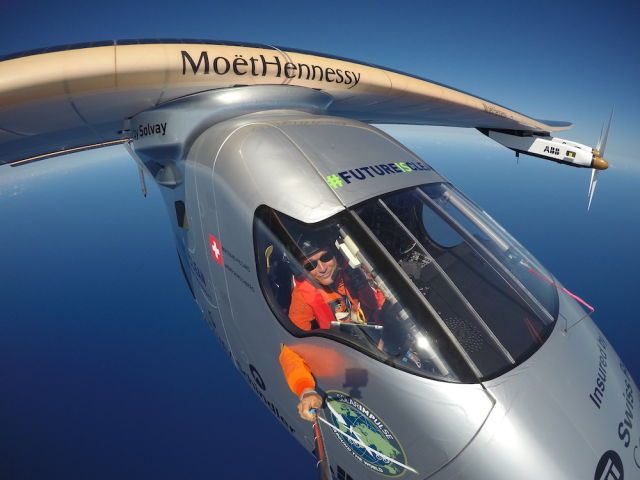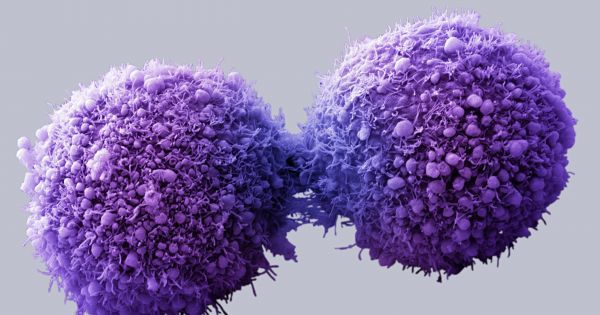Page 11095
Jun 23, 2016
SpaceX discusses progress toward human missions of Dragon/Falcon 9
Posted by Klaus Baldauf in category: space travel
While continuing to impress even themselves with their ability to successfully propulsively land Falcon 9 first stages on land and in the ocean, SpaceX is continuing to progress on its human spaceflight endeavors, with the company’s Dragon spacecraft, Falcon 9, and ground operations development all keeping pace for a second quarter 2017 debut of the human-rated Dragon spacecraft before the first human Dragon launch by the end of 2017.
Humans on Dragons:
As one of two companies to receive funding and contracts for NASA’s Commercial Crew Program (CCP), SpaceX has spent years developing its human-rated Dragon spacecraft to help fill a crucial aspect of spaceflight left void by NASA following the conclusion of the Space Shuttle Program in July 2011.
Continue reading “SpaceX discusses progress toward human missions of Dragon/Falcon 9” »
Jun 23, 2016
Genetic algorithms can improve quantum simulations
Posted by Klaus Baldauf in categories: computing, genetics, information science, quantum physics
(Phys.org)—Inspired by natural selection and the concept of “survival of the fittest,” genetic algorithms are flexible optimization techniques that can find the best solution to a problem by repeatedly selecting for and breeding ever “fitter” generations of solutions.
Now for the first time, researchers Urtzi Las Heras et al. at the University of the Basque Country in Bilbao, Spain, have applied genetic algorithms to digital quantum simulations and shown that genetic algorithms can reduce quantum errors, and may even outperform existing optimization techniques. The research, which is published in a recent issue of Physical Review Letters, was led by Ikerbasque Prof. Enrique Solano and Dr. Mikel Sanz in the QUTIS group.
In general, quantum simulations can provide a clearer picture of the dynamics of systems that are impossible to understand using conventional computers due to their high degree of complexity. Whereas computers calculate the behavior of these systems, quantum simulations approximate or “simulate” the behavior.
Continue reading “Genetic algorithms can improve quantum simulations” »
Jun 23, 2016
Solar Impulse 2 completes world’s first solar-powered Atlantic flight
Posted by Bryan Gatton in categories: solar power, sustainability
The flights take such a long time because Solar Impulse 2, as the name suggests, is completely powered by sunlight. The plane’s massive 72-metre wings (broader than a 747!) are covered in some 269.5 square metres of photovoltaic cells. During the day, the cells power four 14kW (17.4hp) electric motors and top-up four 41kWh lithium-ion batteries. During the evening, the motors are driven by the batteries. Max cruise speed when the sun is up is 49 knots (90km/h), and a rather languid 33 knots (60km/h) at night.
The solar cells don’t quite refill the batteries during the day, which means the plane can’t fly forever just yet. Max flight duration is somewhere around five to six days.
For power-saving reasons, the Solar Impulse 2 cockpit can only carry a single human, and is both unheated and unpressurised. The pilots do sleep while they’re up in the air, but usually just for 20 minutes at a time (the telemetry data for one flight showed 10 catnaps of 20 minutes over a 24-hour period). Now multiply those conditions by a continuous flight time of three or four days and you have some idea of the rigours that Piccard and Borschberg must go through.
Continue reading “Solar Impulse 2 completes world’s first solar-powered Atlantic flight” »
Jun 22, 2016
Approved: First Ever Human Trials Involving CRISPR Gene Editing
Posted by Karen Hurst in categories: bioengineering, biotech/medical, genetics, health
Excellent!!! Cannot wait until we eradicate cancer, MS, Parkinson, Dystonia, Cystic-Fibrosis, LGD, etc.
A team of Physicians at the University of Pennsylvania’s School of Medicine now has their project of modifying the immune cells of 18 different cancer patients with the CRISPR-Cas9 system approved by the National Institute of Health.
CRISPR is the gift that keeps on giving—when it’s not fighting blindness, tackling HIV, or even recording real-time immune responses, it is taking on the emperor of all maladies: cancer.
Continue reading “Approved: First Ever Human Trials Involving CRISPR Gene Editing” »
Jun 22, 2016
A Tiny House Was Built in 24 Hours, Thanks to A 3D Concrete Printer
Posted by Karen Hurst in categories: 3D printing, computing, habitats
Forget pitching a tent when camping; soon (at this rate) we can have the 3D Printer print us a cabin.
A tiny house was built using Vesta, the 3D concrete printer. It took 24 hours to build the structure. The developer aims to shorten the construction time with the third version of the device.
Vesta, the 3D concrete printer, was just used to print a house. Though the word “house” may be a little suspect. Admittedly, given its size, the structure is more of a tool shed than a home, but one could theoretically live inside of it.
Continue reading “A Tiny House Was Built in 24 Hours, Thanks to A 3D Concrete Printer” »
Jun 22, 2016
Teen Dies After Contracting Brain-Eating Amoeba
Posted by Karen Hurst in category: neuroscience
Jun 22, 2016
Boston Children’s Hospital uses 3D printing to help baby born with brain outside his skull
Posted by Karen Hurst in categories: 3D printing, biotech/medical, neuroscience
3D Printing never ceases to amaze me.
Doctors at Boston Children’s Hospital used a 3D printout of a boy’s skull to prepare for the surgery that saved his life, STAT reports.
Bentley Yoder was born with encephalocele, a rare and often fatal defect in which the skull doesn’t form properly. In Bentley’s case, a significant portion of his brain grew outside of his skull, according to STAT. Despite being told he would not survive, his parents, Dustin and Sierra, continued to seek treatment that would give their son a future, eventually traveling from their home in Ohio to Boston Children’s Hospital.
Jun 22, 2016
This brilliant 10-year-old kid built a fully functional 3D printer out of Legos and K’nex
Posted by Karen Hurst in categories: 3D printing, innovation
One of the latest innovations in the 3D printing world comes from a preteen who created a 3D printer using a 3D –rinting pen and a Lego Mindstorms EV3.
Jun 22, 2016
Italian Paleontologist Turns to Materialise to Help 3D Print Trilobite Fossils
Posted by Karen Hurst in categories: 3D printing, bioengineering, biotech/medical
Who needs cloning or gene editing; when you have 3D printers.
 Although—in the grand scheme of things—3D printing is a relatively new technology in the eyes of humanity, that certainly doesn’t mean that it can’t be used to recreate some of the most ancient artifacts and fossils scattered throughout the Earth. Over the past year, we’ve seen 3D printing technology help recreate the oldest chameleon fossil ever found, as well as a 1220-foot Titanosaur fossil. Even some of the world’s tiniest fossils have been digitally resized and 3D printed so that a paleontologist from the University of Oxford could better examine them. Now, trilobites, which are a group of extinct marine arthropods, are undergoing their own unique form of 3D printed treatment.
Although—in the grand scheme of things—3D printing is a relatively new technology in the eyes of humanity, that certainly doesn’t mean that it can’t be used to recreate some of the most ancient artifacts and fossils scattered throughout the Earth. Over the past year, we’ve seen 3D printing technology help recreate the oldest chameleon fossil ever found, as well as a 1220-foot Titanosaur fossil. Even some of the world’s tiniest fossils have been digitally resized and 3D printed so that a paleontologist from the University of Oxford could better examine them. Now, trilobites, which are a group of extinct marine arthropods, are undergoing their own unique form of 3D printed treatment.
Dr. Gianpaolo Di Silvestro, established paleontologist and CEO of the Italian company Trilobite Design Italia, specializes in this group of extinct arthropods, and uses his company to sell both original trilobite fossils and model replicas to collectors, institutions, and museums across the globe. After realizing that a great number of museums were able to provide text information on these fossils, but not a true physical representation, Dr. Di Silvestro decided to provide these museums with palpable trilobite models that would allow visitors to actually hold the ancient past in the palms of their hands. Since traditional fossil casting and modeling proved to be much too costly and time-consuming, Dr. Di Silvestro instead collaborated with Italian architect and 3D designer Francesco Baldassare to work in tandem and design accurate 3D models of trilobites.
Continue reading “Italian Paleontologist Turns to Materialise to Help 3D Print Trilobite Fossils” »

















